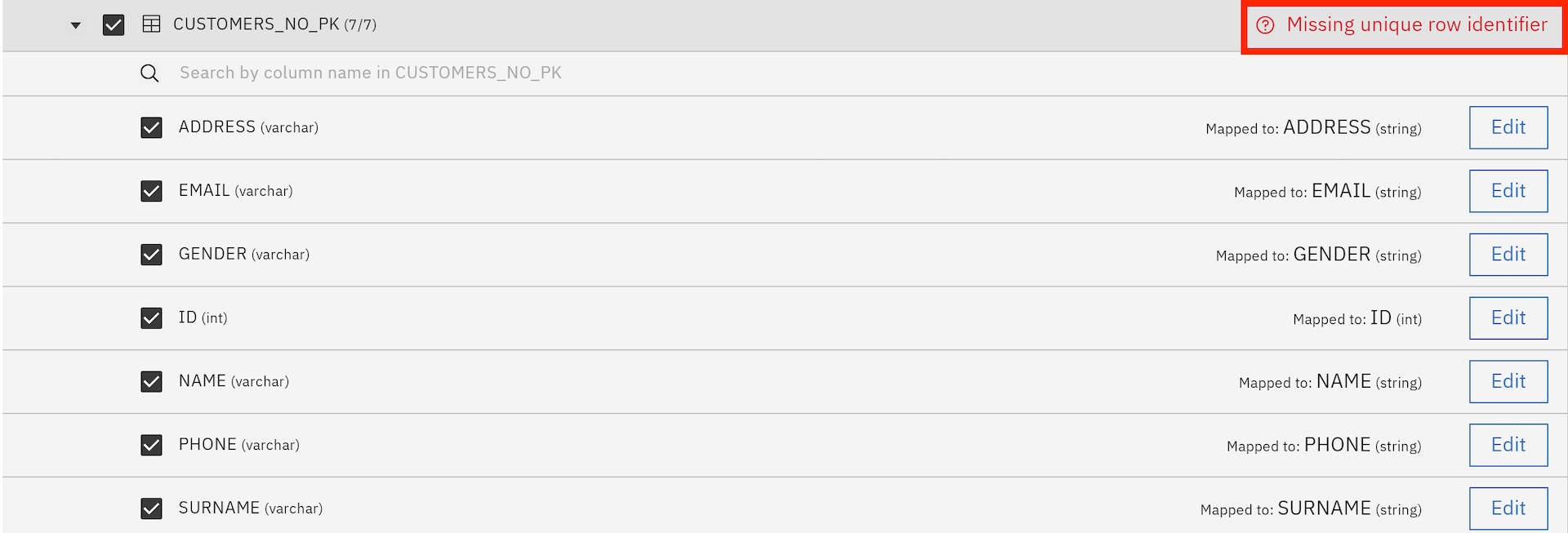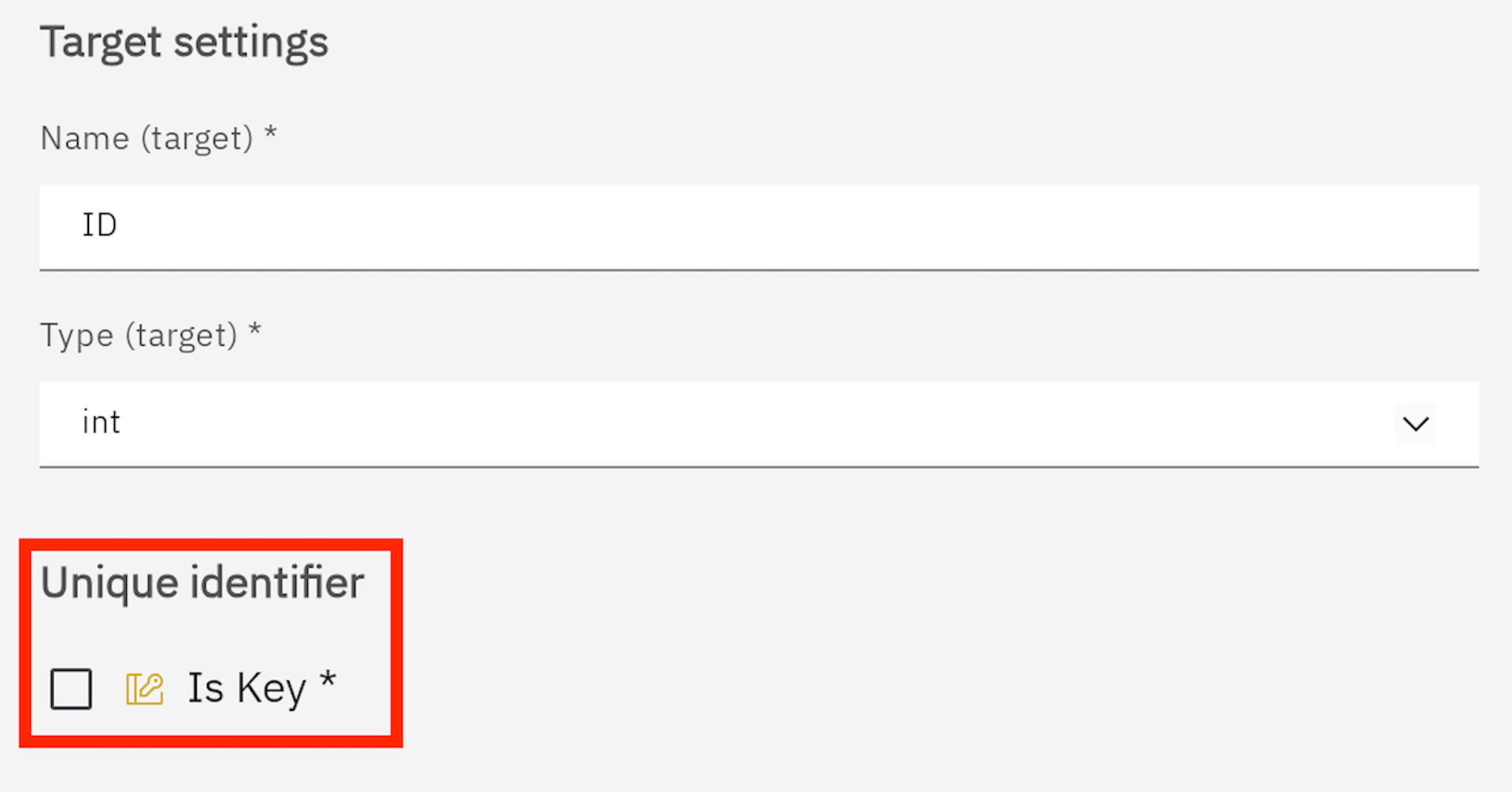Setting Logical Keys for tables without primary keys
Gluesync allows you to set a logical key for tables that don’t have a primary key defined at the database level. This is essential for proper data synchronization and conflict resolution.
Why set a logical key?
A logical key serves as a unique identifier for each row in a table when no primary key exists. This is necessary because:
-
Ensures each row can be uniquely identified
-
Enables proper data synchronization
-
Prevents data duplication
-
Supports conflict resolution
How to set a logical key
Follow these steps to set a logical key for a table without a primary key:
Create a new entity and select the table that doesn’t have a primary key
|
A 'Missing unique row identifier' message will appear next to the selected table to indicate that the primary key is missing. |

Navigate to the column you want to set as the logical key
Click the 'Edit' button (pencil icon) next to the column selection

In the column properties, find the 'Is Key' field

Enable the 'Is Key' option by clicking the tick button
Confirm your changes to save the configuration

Best practices
-
Choose a column with unique values as your logical key
-
Avoid using columns with NULL values as logical keys
-
Consider using a combination of columns if no single column is unique
-
Document your logical key choices for future reference
|
The logical key you set will be used by Gluesync for synchronization purposes but won’t modify your actual database schema. |